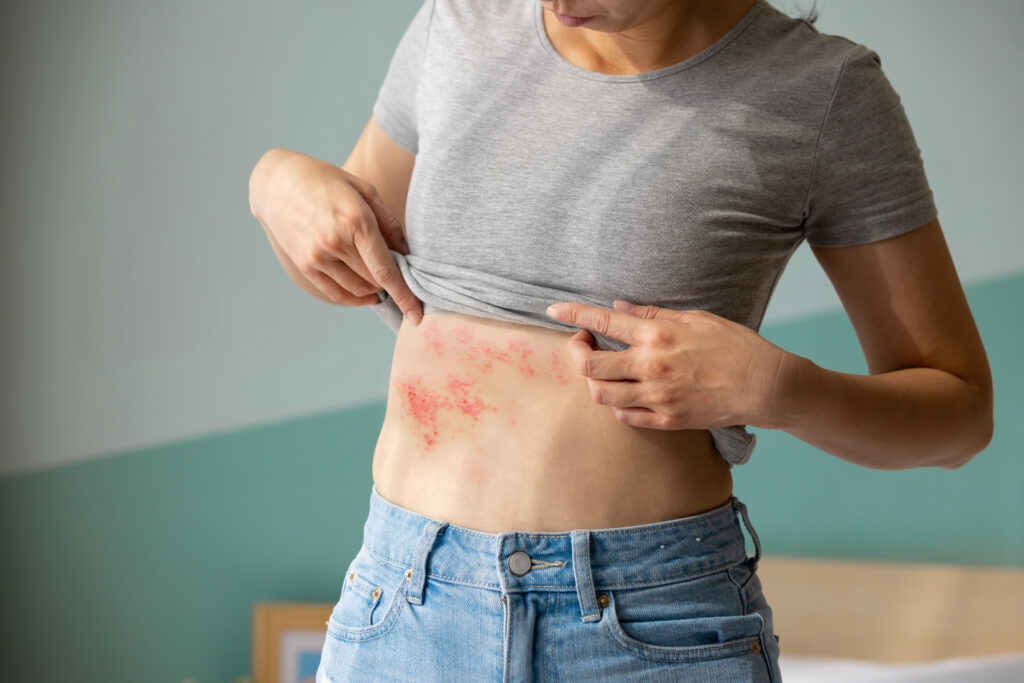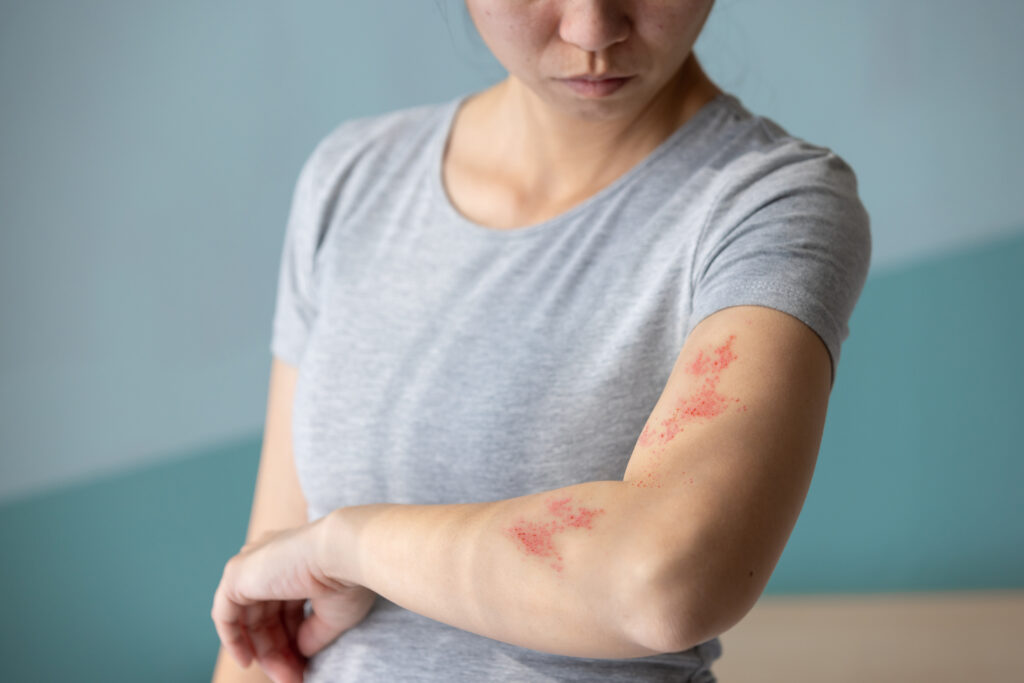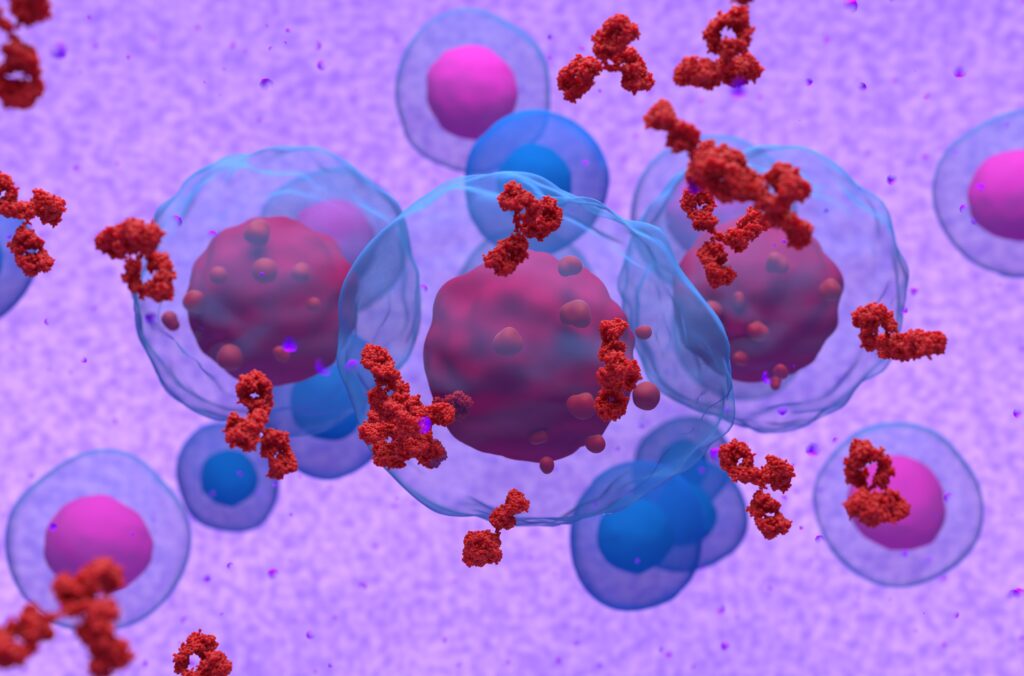
In the United States, an average of 1 million people get shingles every year. If you’ve ever had chickenpox, there’s a good chance you’ll get shingles. This viral condition causes a rash and blisters on the skin, often in bands along one side of the torso or around the waistline. When your body fights off the chickenpox virus (varicella-zoster), the physical signs of the illness go away, but the virus remains in some of your nerve cells. In adults, the virus can reappear as shingles.
Unlike chickenpox, you can get shingles more than once, though you likely won’t get the rash in the same place. The older you are when you get shingles, the more likely you will experience a complication called postherpetic neuralgia (PHN), which is pain that occurs in the area where the shingles rash appeared. PHN can interfere with your daily life, so it’s important to speak with your doctor about it if you begin experiencing pain after going through shingles.
Symptoms and Causes of Shingles
Shingles usually develops on one small area of your face or body, with the most common location being in a band around your waistline. Early symptoms can include:
- Chills
- Fever
- Sensitivity to light
- Upset stomach
- Fatigue
- Headache
A few days after the early symptoms, you can begin feeling and seeing:
- Burning, tingling, or itching sensation in an area of your skin
- Raised rash
- Skin redness in the affected area
- Fluid-filled blisters
- Mild to severe pain in the affected area
It can take three to five weeks from when you start feeling symptoms until the rash disappears.
The chickenpox virus causes shingles, but what can make you more likely to get the active disease?
If you have a weakened immune system (for example, receiving chemotherapy or living with HIV), you are more at risk of developing shingles.
Shingles typically occurs in people over 50, and it can affect those who are under stress or who take medications like prednisone.
Shingles Treatment Options
There is no cure for shingles, but there are excellent treatment options to help you manage symptoms and even prevent new outbreaks.
You want to wear loose-fitting clothing made of natural fibers to manage the discomfort of the blisters and rash. You can use calamine lotion and take oatmeal baths to help soothe your skin as well.
When you get blisters, apply a cool washcloth to them to ease the discomfort and to help dry them out. Don’t scratch the blisters or the rash since that can leave a scar.
Stress can worsen the pain, so try to rest and relax as you recover.
For some people, antiviral medications can also help. They can make the symptoms milder and might even speed up recovery. Some antivirals that doctors prescribe to treat shingles are:
- Famciclovir
- Valacyclovir
- Acyclovir
You can also turn to over-the-counter medications like ibuprofen and acetaminophen. If shingles affects your eyes or other parts of your face, your doctor may give you an anti-inflammatory as well.
Remember that there is a vaccine for shingles, just as there is one for chickenpox. Whether you have had shingles before or not, you can get the vaccine to help prevent future issues.
If you have it, you can prevent the spread of shingles by covering up the blisters and rash and staying away from anyone with a weakened immune system or who hasn’t had chickenpox. Wash your hands often, and don’t scratch the rash or blisters.
After the shingles rash passes, one of the complications that can arise is continued pain that can last for months or years. Ordinary painkillers generally don’t help against that kind of pain, but some medications, like antidepressants and even drugs for epilepsy, can help.
Other shingles complications can include nerve issues, like tingling and numbness, as well as bacterial infections if one of the blisters gets infected. Some people can experience eye or ear infections if the rash occurs near these parts.
Are You at Risk? Get Help for Shingles
With a vaccine available that can prevent the disease and protect you from further outbreaks, you can get the help you need if you’re at risk. Even if you’ve not had chickenpox, getting the shingles vaccine can help you avoid catching the illness as an adult when it can be much more severe.
If you want to know more about shingles and your treatment options, you can contact the National Shingles Foundation.
Resource Links:
- “Shingles (Herpes Zoster)” via Centers for Disease Control and Prevention
- “Varicella-Zoster Virus (Chickenpox)” via National Library of Medicine
- “Postherpetic Neuralgia” via National Library of Medicine
- “Shingles, PHN & Chickenpox FAQs” via National Shingles Foundation





